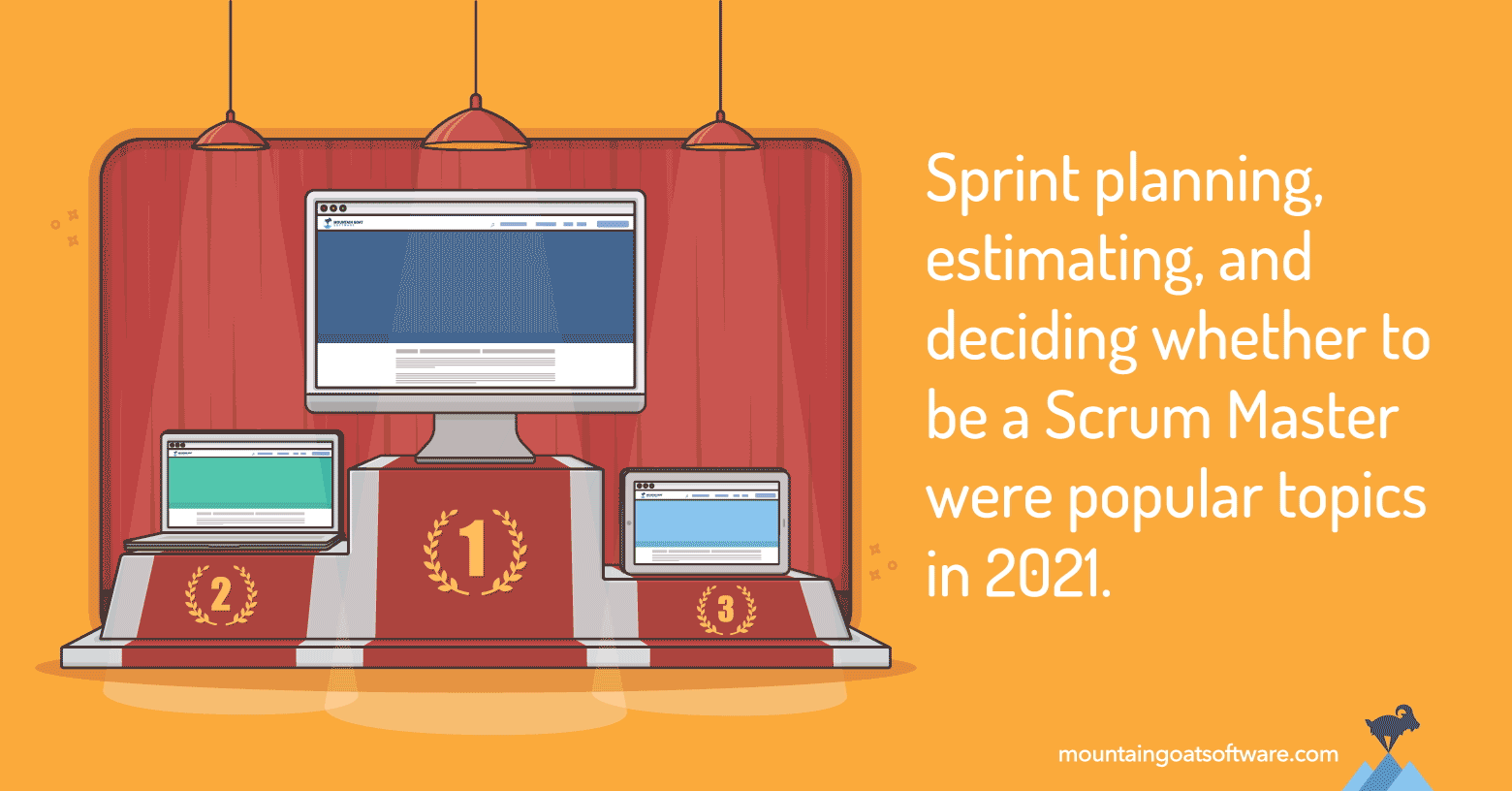Each January, I look back at the prior year’s blog posts and share the most popular. Last year was a busy year for me–I struggled to stay current with some of my own favorite blogs. If, like me, you fell behind in your reading, here’s a chance to catch up on the ten most popular blogs I wrote based on comments and page views.
10. Is It Dangerous to Calculate the Cost per Point?
The tenth-most popular blog post addressed the consequences when a team calculates the cost per point of delivering functionality. It’s interesting because the dangers aren’t inherent. But there can be dangers in how that cost is used, especially by those outside the team.
9. Three Strategies for Fitting Refactoring into your Sprints
In the ninth-most popular blog of last year, I presented three approaches teams can use to ensure they have time for refactoring. This post also covers the pros and cons of maintaining a separate refactoring backlog.
8. Should You Re-Estimate Unfinished Stories?
Re-estimating is one of the topics I am most frequently asked about. There’s not an easy rule of thumb that can be applied in all cases by all teams. But in this post I provide guidance that should help you answer the question for your team.
7. The Goal of Sprint Planning
Many teams make the mistake of thinking that the purpose of Scrum’s sprint planning meeting is to estimate a lot of tasks. In the seventh-most popular post from 2021, I write that the goal of sprint planning is something else entirely.
6. The Three Types of Requirements on Any Project
Last year’s sixth-most popular post is one of the most important posts of the year, I think. The post describes three types of requirements:
- Those we’re aware of
- Those we overlook
- Those our users can only help us discover once they start seeing partial implementations of the product
5. Should a Team Assign Work During Sprint Planning?
The fifth-most popular post from 2021 covers something I’ve changed my mind about over the last two decades: whether a team should divvy up tasks among team members during the sprint planning meeting. This post covers my current view and helped me reconcile why I’d changed my mind since the early days of agile.
4. Needs, Wants, and Wishes on Your Product Backlog
I’ve never been a fan of separating requirements into must-have, should-have, could-have, and won’t-have categories. Out of all the times I’ve seen that, I could probably count on one hand the instances when could-have items end up included in the deliverable. So why bother with that? A random conversation with a financial planner introduced me to what I think are a better set of terms.
3. Are Fixed-Price Projects Agile?
I find it tiresome when people tell me this or that type of project can’t be agile. I consider agile a response to the constraints of a project. A customer who wants to lock down the price of a project gives a challenging constraint, but a team can still be agile in that situation.
2. Seven Questions to Determine if Being a Scrum Master Is Right for You
I wasn’t surprised that this was the second-most popular post from last year. In it I offer advice in the form of seven questions that will help you decide if being a Scrum Master is right for you.
1. Why I Don’t Emphasize Sprint Goals
Finally, in the most popular of my posts from 2021, I take on the subject of sprint goals. They’re great for some but not all teams. In this post, I share the type of teams that do not benefit from a sprint goal and what they should do instead.
Last update: June 25th, 2024









